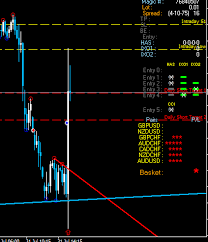
Introduction
Walmart Inc. is a significant player in the global retail market, known for its vast chain of hypermarkets, discount department stores, and grocery stores. As the world’s largest retailer, the importance of Walmart stock (NYSE: WMT) extends beyond just its performance on the stock market; it reflects consumer trends and economic conditions in North America and beyond. With the company navigating challenges posed by inflation, supply chain disruptions, and shifting consumer behavior, tracking its stock is crucial for investors and analysts alike.
Current Performance and Recent Trends
As of October 2023, Walmart’s stock has shown resilience despite volatility in the retail sector. The stock price is currently hovering around $150, having seen a year-to-date increase of approximately 15%. Analyst forecasts have been largely optimistic due to Walmart’s robust Q2 earnings report, which exceeded analyst expectations, reporting revenues of $160 billion, a 5% year-on-year increase. This surge was driven by strong grocery sales and e-commerce growth, particularly as consumers continue to adapt to online shopping.
Analysts attribute part of this stock performance to Walmart’s effective supply chain management and its investment in technology, which have allowed the retailer to navigate rising costs more effectively than many competitors. Moreover, Walmart’s strategic initiatives to enhance its online shopping experience and integrate technology in-store have added to its competitive edge, contributing positively to stock performance.
Challenges Facing Walmart Stock
Despite the positive metrics, challenges remain. The looming threat of inflation continues to impact consumer spending behaviors, with shoppers becoming more price-sensitive. Furthermore, competitors like Amazon are continuously enhancing their market share in the e-commerce space, which puts further pressure on Walmart to innovate and maintain its customer base. The company’s decision to diversify its offerings, including increasing its private-label products and expanding into digital services, will be essential for sustaining growth.
Conclusion
Walmart stock remains a key indicator of the overall health of the retail sector and consumer spending patterns. As the company navigates a complex economic landscape, its ability to adapt will determine its future stock performance. Investors are advised to keep an eye on Walmart’s upcoming quarterly earnings results and strategic initiatives, as these will provide critical insights into the retailer’s long-term growth potential. While the current outlook remains cautiously optimistic, ongoing assessments will be necessary to understand the continuous evolution of Walmart’s business model in an increasingly competitive marketplace.




